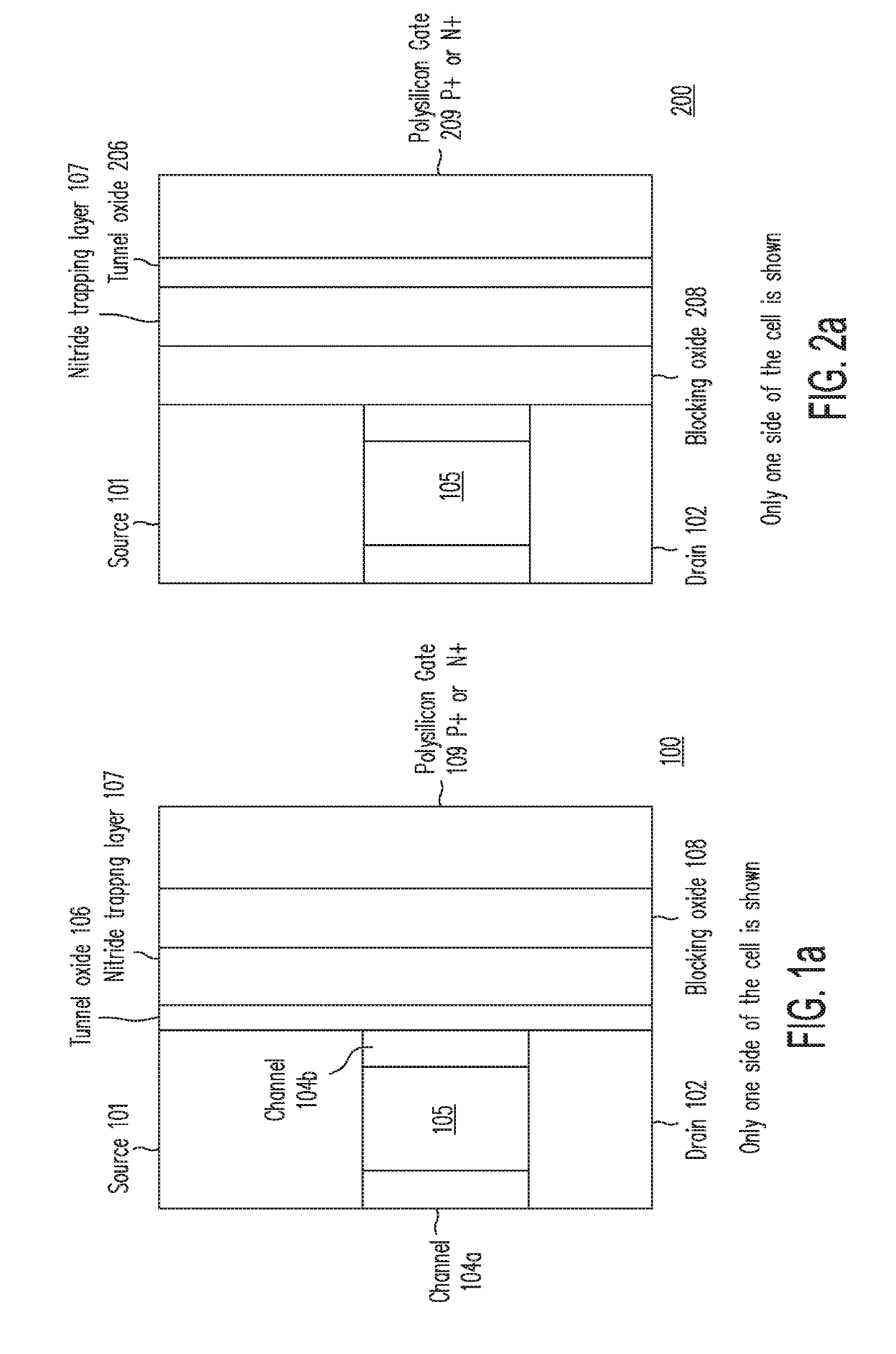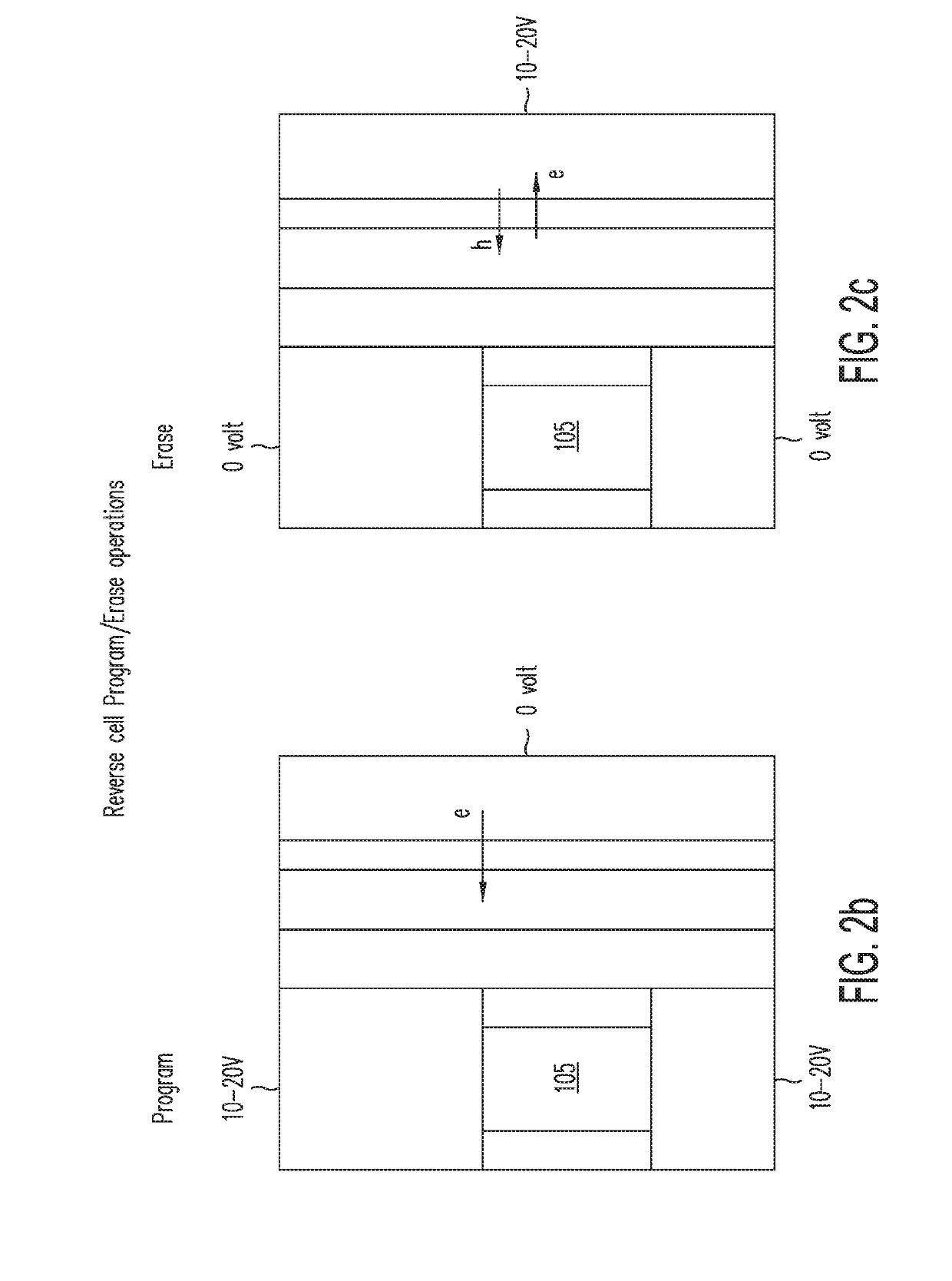Reverse memory cell
a memory cell and reverse memory technology, applied in the field of memory devices, can solve the problems of complex processing of the lue device, design and programming of erasing operations, and the limitation of the use of the p-channel memory cell, and achieve the effect of reducing the complexity of the device, and reducing the cost of the devi
- Summary
- Abstract
- Description
- Claims
- Application Information
AI Technical Summary
Benefits of technology
Problems solved by technology
Method used
Image
Examples
Embodiment Construction
[0015]The present invention provides a non-volatile “reverse memory cell” for a 3-dimensional memory array. In this detailed description, the term “reverse memory cell” refers to a memory cell that includes a charge-trapping layer which is programmed or charged through gate-injection, rather than channel-injection. A reverse memory cell of the present invention may be implemented as either an n-channel memory cell or a p-channel memory cell, without incurring design or process penalties, or any complexity in programming or erase operations. Furthermore, all reading, programming, erase, program-inhibiting operations may be carried out in the reverse memory cell of the present invention using only one polarity of voltages: i.e., only positive voltages for an N-channel reverse memory cell and only negative voltages for P-channel reverse memory cell, thereby simplifying both the design and the power management operations.
[0016]The Non-provisional Patent Application, incorporated by refe...
PUM
 Login to View More
Login to View More Abstract
Description
Claims
Application Information
 Login to View More
Login to View More - R&D
- Intellectual Property
- Life Sciences
- Materials
- Tech Scout
- Unparalleled Data Quality
- Higher Quality Content
- 60% Fewer Hallucinations
Browse by: Latest US Patents, China's latest patents, Technical Efficacy Thesaurus, Application Domain, Technology Topic, Popular Technical Reports.
© 2025 PatSnap. All rights reserved.Legal|Privacy policy|Modern Slavery Act Transparency Statement|Sitemap|About US| Contact US: help@patsnap.com



